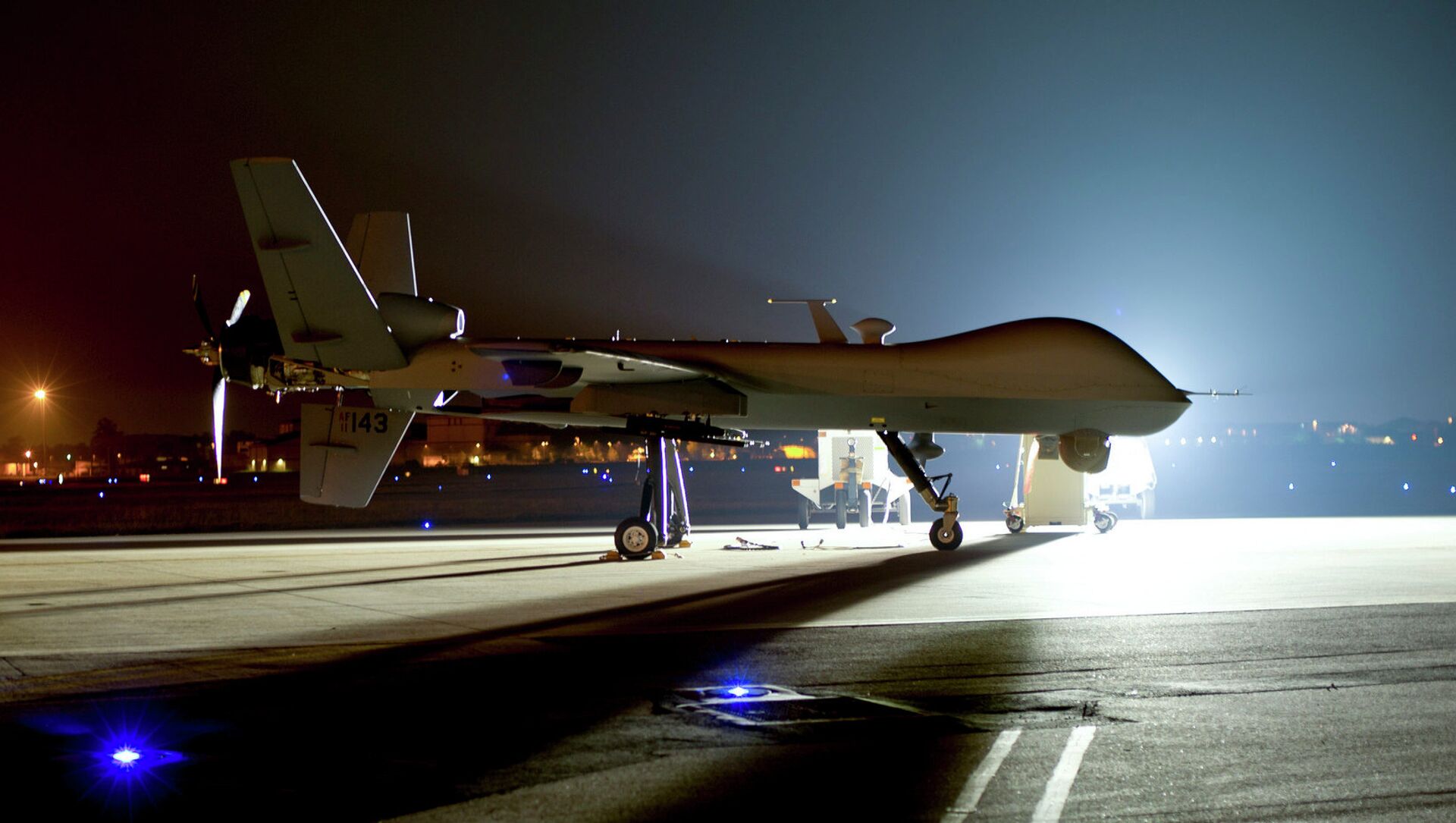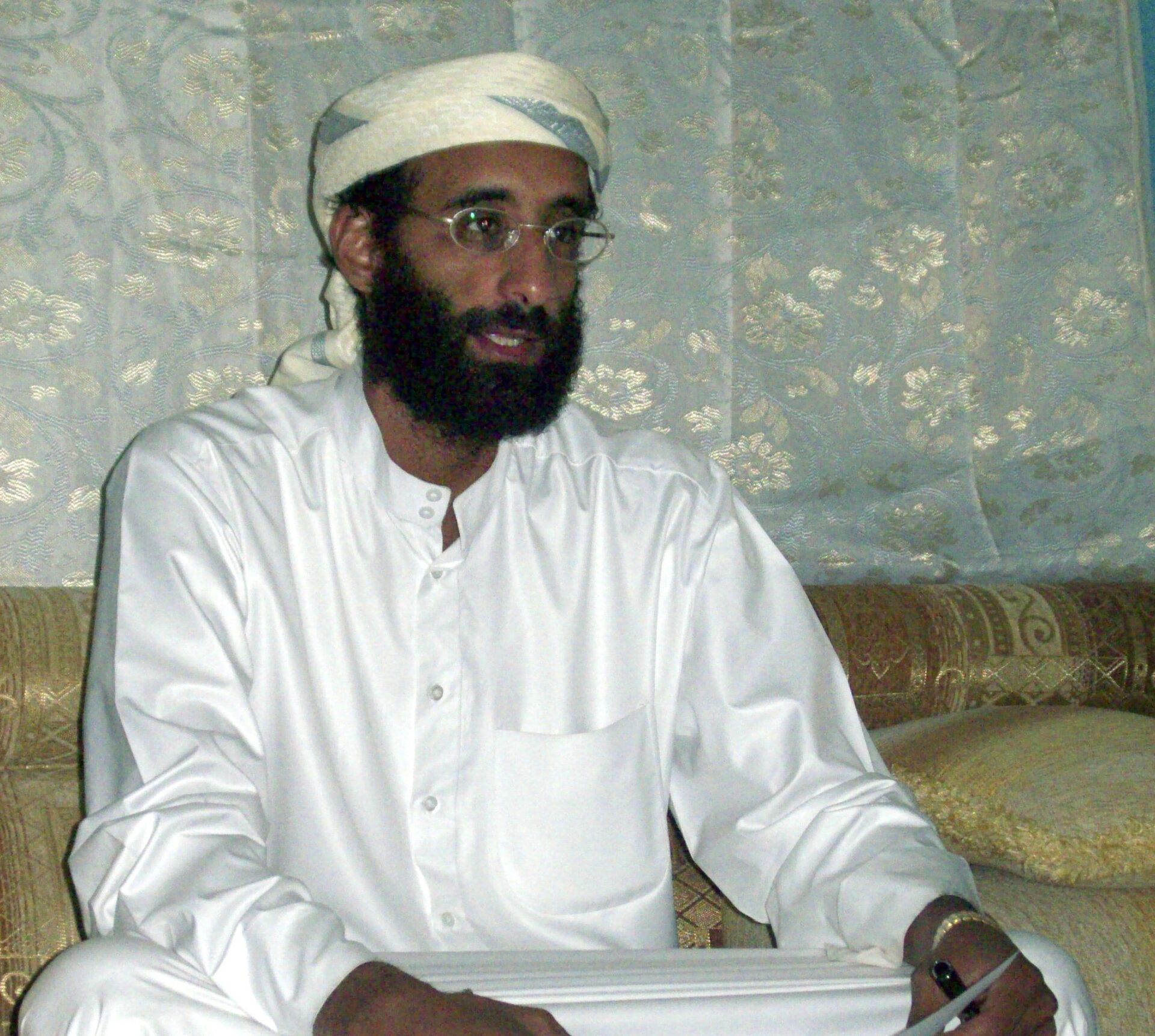Biden Admitted US War in Afghanistan Isn’t Really Ending - It’s Becoming a Somalia-Like Drone War
22:50 GMT 17.08.2021 (Updated: 05:53 GMT 16.07.2023)

© Flickr / US Air Force
Subscribe
Pakistani President Imran Khan bluntly rebuffed requests by the CIA to use his country for future operations across the Afghan border after the US withdrawal, leaving the US with few options for basing combat drones or other air assets after its bases in Afghanistan were handed over.
The US plans to continue military operations in Afghanistan after the final withdrawal on August 31, 2021, US President Joe Biden said in his speech on Monday following the surrender of Kabul to the Taliban over the weekend.
In a Monday televised speech in which he defended his adherence to the withdrawal negotiated with the Taliban by his predecessor, Donald Trump, Biden said he’d always believed the US mission “should be narrowly focused on counterterrorism, not counterinsurgency or nation-building,” and that the US wasn’t giving up on that mission in pulling its roughly 12,000 troops out of Afghanistan.
“Today a terrorist threat has metastasized well beyond Afghanistan: al-Shabaab in Somalia, al-Qaeda in the Arabian Peninsula (AQQP), al-Nusra in Syria, ISIS [Daesh] attempting to create a caliphate in Syria and Iraq and establishing affiliates in multiple countries in Africa and Asia,” Biden said.
“These threats warrant our attention and our resources. We conduct effective counterterrorism missions against terrorist groups in multiple countries where we don’t have permanent military presence. If necessary, we’ll do the same in Afghanistan,” he added. “We’ve developed counterterrorism over-the-horizon capability that will allow us to keep our eyes firmly fixed on the direct threats to the United States in the region, and act quickly and decisively if needed.”
The war in Afghanistan rested on the same legal basis as the rest of the US War on Terror: the Authorization for Use of Military Force (AUMF) passed by Congress on September 18, 2001, a week after the terrorist attacks by al-Qaeda that destroyed the World Trade Center skyscrapers in New York and damaged the Pentagon in Arlington, Virginia, killing roughly 3,000 Americans.
The US invasion of Afghanistan followed just weeks later, and while the Taliban government that had harbored al-Qaeda was quickly overthrown, it regrouped in the countryside and launched a new insurgency the following year, which on Sunday finally succeeded after 18 years in seizing Kabul and dispersing the US-backed Afghan government.
Drone War on Terror
The 2001 AUMF gave the Pentagon authorization under US law to strike targets in countries other than Afghanistan, as well, if they were operated by al-Qaeda or al-Qaeda affiliates, without a more formal declaration of hostilities, but also without the permission of the host nation. The first of these was a drone strike on Marib, Yemen, in November 2002, which the Pentagon claimed killed six suspected members of AQAP, one of whom was a US citizen. The program expanded to include airstrikes in Pakistan and Somalia, as well.
However, for years the program operated without a clear set of rules, based largely on the authorization of the US president. In 2011, civil rights advocates were infuriated by another drone strike outside Marib that killed two American citizens who had joined al-Qaeda, and the following year it was revealed that then-US President Barack Obama maintained a physical “kill list” that included at least three other US citizens.
In 2013, Obama introduced a codified set of procedures “for approving direct action against terrorist targets located outside the United States and areas of active hostilities.” The document importantly stated that, “absent extraordinary circumstances,” a strike could only be authorized “when there is near certainty that the individual being targeted is in fact the lawful target and located at the place where the action will occur” and only if “there is near certainty that the action can be taken without injuring or killing non-combatant.”

FILE - This October 2008, file photo shows Imam Anwar al-Awlaki in Yemen
© AP Photo / Muhammad ud-Deen
However, after Trump became president in 2017, these rules were revised to give commanders in the field extensive leeway, although ostensibly still maintaining the requirement of “near certainty that noncombatants will not be injured or killed.” As a consequence, the use of drone strikes soared under Trump, with 197 airstrikes in Somalia and 190 airstrikes in Yemen during Trump’s four-year tenure - more than in both Obama and George W. Bush’s administrations combined.
In Afghanistan airstrikes continued as well, with an average of two Afghan civilians being killed by US airstrikes every day, for a total of more than 700 civilians killed in 2019.
Biden Reviews Protocols
The new directions were suspended after Biden took office in 2021 and a review of the Trump-era actions was undertaken in March. According to a New York Times report in May, officials had found that exceptions were regularly made to the “near-certainty” requirement and that “noncombatants” was typically used as a euphemism for “women and children,” leaving all men and boys of a certain age to be classified as combatants at will. Indeed, that’s what National Security Agency analyst Daniel Hale reported when he blew the whistle about the US drone program in Afghanistan, for which he was sentenced last month to more than three-and-a-half years in prison.
“If you can say we’re not gonna have any civilian casualties, then the senior leader, a senior general officer, can say ‘OK, take the shot,’” Brig. Gen. Donald Bolduc, who commanded US special operations forces in Africa from April 2015 to June 2017, told the Daily Beast in 2018. “The only assessment we have is we continue to fly over the objective post-strike to get a sense of the environment from the air.”
Bolduc noted that the standing policy was not to investigate civilian casualties until concerns were raised by journalists, other governments, or nongovernmental organizations. Unfortunately for US Africa Command, one such NGO, Amnesty International, did just that in 2020. Amnesty compelled the Pentagon to admit to killing civilians in Somalia during a period it had previously claimed there were no civilian deaths. After that, AFRICOM agreed to publish quarterly reviews of potential civilian casualties and deaths.
On Tuesday, US Secretary of State Antony Blinken told CNN that the US “could recognize” the Taliban government if it respects human rights and doesn’t harbor terrorists. However, if the Talbian doesn’t do those things, sanctions will remain in place and international aid would dry up. Thus, the stage is set for a continuation of the Afghanistan war in a different, yet familiar form.

